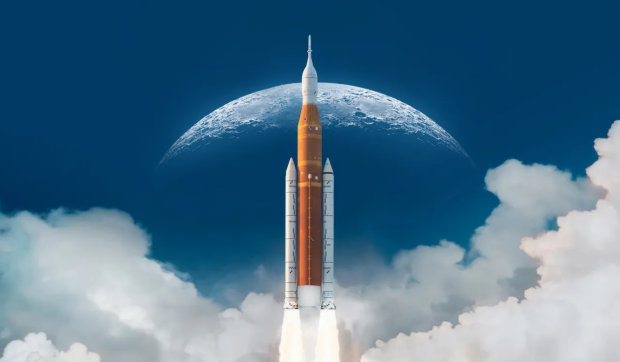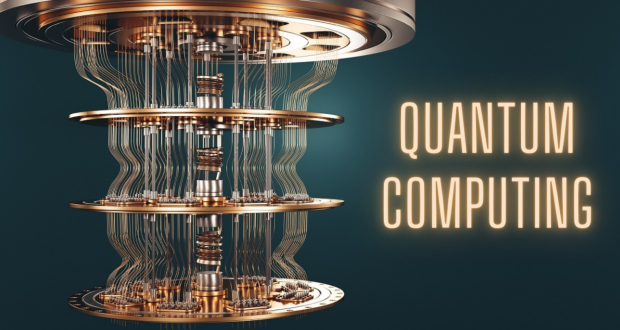Science, Space, Health & Robotics News - Page 12
Elon Musk confirms the first human has received a Neuralink brain implant
The time has finally come, and while many people, including myself, may have thought brain implants were many years away, Elon Musk has announced that the first human has received a Neuralink implant.
In December, Neuralink announced at its event that it was preparing to implant its brain chip into human patients and needed participants. It seems some people put up their hands as the first human has received the implant. Notably, the human trials began after the US Food and Drug Administration (FDA) gave the company approval for human testing, which is part of a wider study designed to assess the functionality of the brain-computer interface.
Now, Elon Musk, the founder of Neuralink, has announced via his personal X account the first human has received a Neuralink brain implant and is "recovering well". Additionally, Musk wrote, "Initial results show promising neuron spike detection," which can be translated to brain neuron activity. According to the National Institute of Health, cells use electrical and chemical signals to send information around the brain and body. These signals appear as spikes when fired by the neuron.
NASA wants to put a massive telescope on the dark side of the moon
NASA has big plans for its return to the moon under the space agency's Artemis Program, and now a new proposal has surfaced under NASA's Innovative Advance Concepts (NIAC) Program that could, if approved, put a massive telescope on the dark side of the moon.
The new proposal written by Kenneth Carpenter and his colleagues at NASA Goddard Space Flight Center (GSFC) details a Long-Baseline Optical Imaging Interferometer (LBI) designed for the dark side of the moon, and would be called the Artemis-enabled Stellar Imager (AeSI). The telescope would consist of an array of smaller telescopes designed to image objects and regions of space in ultraviolet and visible wavelengths.
The proposal states there is massive potential for having an observatory on the lunar surface due to the "radio quiet" nature of the environment and prolonged periods of darkness. For those that don't know, the moon is tidally locked to Earth, meaning one of the sides of the moon is always facing toward Earth, hence the name description "dark side of the moon". Due to this gravitational phenomenon, two weeks on the lunar surface consists of one Earth day, which means the dark side of the moon will be in total darkness for two weeks at a time.
Continue reading: NASA wants to put a massive telescope on the dark side of the moon (full post)
Scientists discover a hidden new type of star deep within our Milky Way galaxy
Authors of a series of papers published in the Monthly Notices of the Royal Astronomical Society detail the discovery of a new type of star that was found by analyzing a decade-long collection of data collected by the Visible and Infrared Survey Telescope (VISTA).
The team behind the study focused on approximately 200 stars in a specific region of space that had seemingly dramatic shifts in brightness. More specifically, the team was searching for any signs of protostars or young baby stars that are very early in their life. Of the 200 selected stars, the team discovered 32 protostars; each of these was in the process of becoming a fully-fledged fusion monster star, meaning they were constantly outbursting.
Notably, among these young protostars were 21 red giants deep within the center of the Milky Way galaxy, and according to reports and the studies cited by the reports, these red giants are a new type of red giant called old smokers. The inner regions of the Milky Way is rich with heavy elements, meaning the stars located within these regions also have high metallicity.
NASA telescope makes 'landmark discovery' in finding Earth-like worlds
NASA's iconic Hubble Space Telescope has been used by researchers to identify an exoplanet lurking outside of our solar system that has been described as a "landmark discovery".
The European Space Agency (ESA) and NASA posted to their websites announcing the discovery of an exoplanet located 97 light-years from Earth in the constellation Pisces. The exoplanet is called GJ 9827d and was first discovered by NASA's Kepler Space Telescope in 2017, but now astronomers have pointed Hubble's instruments at exoplanet and detected water vapor.
While this isn't the first exoplanet that astronomers have detected water vapor, it is the smallest at only approximately twice Earth's diameter. Prior to this discovery, water vapor had gone undetected on small planets, and NASA believes that GJ 9827d could be an example of water-rich planets being present elsewhere in our galaxy.
Continue reading: NASA telescope makes 'landmark discovery' in finding Earth-like worlds (full post)
Scientists discovered an asteroid just hours before it exploded over Germany
A few days ago, an asteroid entered Earth's atmosphere and exploded over Berlin, Germany, shocking many onlookers who were lucky enough to see the fiery entry.
Small asteroids enter Earth's atmosphere and explode every day, but due to Earth's surface mostly being covered by water, humans don't typically get to witness these awesome cosmic events. Researchers dedicated to tracking these space rocks are quite good at predicting when they will enter Earth's atmosphere, but every now and again, one small asteroid sneaks past detection or is only detected just hours before impact.
The asteroid that exploded over Berlin is officially called 2024 BXI and was first discovered by Krisztián Sárneczky, an astronomer at the Piszkéstető Mountain Station, part of Konkoly Observatory in Hungary. 2024 BXI was only discovered hours before it entered Earth's atmosphere, but before it arrived, NASA issued a warning for residents in West Berlin. "Heads Up: A tiny asteroid will disintegrate as a harmless fireball west of Berlin near Nennhausen shortly at 1:32 am CET. Overseers will see it if it's clear!" wrote NASA Asteroid Watch
NASA officially announces its Mars helicopter Ingenuity has died
It's a sad day in the science community as researchers and engineers worldwide salute NASA's Mars helicopter Ingenuity as the space agency has announced the helicopter's mission has ended.
NASA administrator Bill Nelson has announced that Ingenuity's efforts on the surface of the Red Planet have come to an end after the small helicopter sustained damage to at least one or more of its rotor blades during the landing of its last flight. Ingenuity landed in the Jezero Crater on the Red Planet in February 2018 with NASA's Perseverance rover.
The primary mission of the helicopter was to demonstrate that flight was capable on another planet, and once that was achieved, Ingenuity essentially turned into a reconnaissance device for NASA as it would fly ahead of Perseverance, capturing the terrain and surrounding area with its onboard cameras.
Continue reading: NASA officially announces its Mars helicopter Ingenuity has died (full post)
NASA releases breathtaking photos of 4.5 billion-year-old asteroid samples
NASA has finally released some high-resolution images of the space agency's first asteroid sample collection, which arrived back on Earth as part of NASA's OSIRIS-REx mission.
NASA collected the OSIRIS-REx capsule more than 3 months ago after it safely landed back on Earth on September 24, but due to the sampler's lid being tightly fastened onto the capsule, researchers were unable to open it. The mission was overall a massive success as NASA captured many more samples than it anticipated, even to the point where there were asteroid samples located on the top of the capsule lid.
The delay was specifically attributed to the two fasteners located on the top of the capsule, and since researchers are only able to interact with the capsule within its dedicated air-tight container through the use of gloves, engineers had to design special tools to unfasten the screws holding the lid in place. That was achieved, and now NASA has 2.48 ounces or 70 grams of asteroid dust.
Taiwan's first home-grown quantum computer is now connected to the internet
A Taiwanese research institute has connected to the internet what is being reported as the nation's first home-grown quantum computer.
The announcement of the successful connection occurred on January 19 and details Taiwan's first domestically built quantum computer that will be used as a test bed for researchers both on-site and elsewhere around the world. Collaborators on the project include the University of California, Santa Barbara, the University of Wisconsin-Madison, the Industrial Technology Research Institute, the National Changhua Normal University, the National Central University, and the National Chung Hsin University.
Academia Sinica's website states the quantum computer was completed back in October last year, but it was only connected to the internet in January this year, marking a milestone in Taiwan's exponential development into quantum computing. The intent of this step forward in the quantum computing industry is to demonstrate the capabilities of the new technology by solving basic problems. After that has been successfully demonstrated, researchers can move on to the next breakthrough application.
PlayStation gaming is coming to PC and mobile says Sony CEO of subscriptions
Sony CEO Kenichiro Yoshida said in an interview with Norges Bank Investment Management that the PlayStation gaming experience will be expanded to PC, mobile, and cloud gaming.
If you ever believed that Sony, for whatever reason, would stop bringing titles over to other platforms such as PC, you can stop worrying; as Sony's CEO of Subscriptions has said during an interview, the company plans on expanding its efforts to bring PlayStation to as many gamers as possible.
PC ports of Sony titles began back in August 2020 with the release of Horizon Zero Dawn on PC and has continued with many titles such as God of War in 2022, Marvel's Spider-Man Remastered, Marvel's Spider-Man: Miles Morales, The Last of Us and many more. With these comments from Yoshida, and Sony's continuous effort to port titles over to PC, I believe it's quite safe to say that PC gamers will soon get many more PlayStation titles.
Scientists create next-generation battery for 'smartphones to operate indefinitely'
The battery is nuclear-powered, smaller than coin, can run for 50 years without needing to be recharged, and can be used for devices such as a smartphone allowing it to operate indefinitely.
The new battery is designed by Beijin-based start-up Betavolt Technology, which currently has a prototype device that uses nuclear isotopes along with semiconductors to convert energy into electrical power. The researchers behind the project also boast about the safety of the battery, saying in an article from Science and Technology Daily that it works safely between temperatures 120 to -60°C.
The company also states the battery is resistant to punctures or gunfire that many would think result in it catching on fire or exploding. The new battery is officially called BV100 and is only 15mm x 15mm x 5mm. It has a maximum output of 100 microwatts and 3 volts, and the company behind it has announced it plans to make a 1-watt version next year after it mass produces the 100 microwatt model. The battery technology captures the energy from the nuclear decay of radioactive elements.











